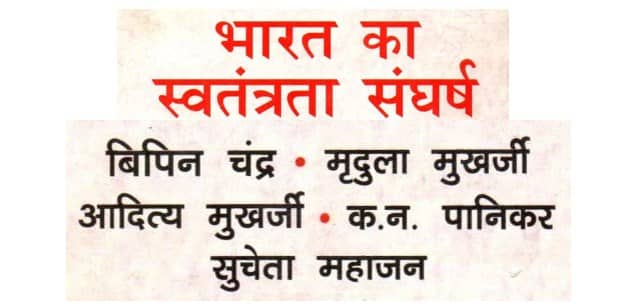Indias Struggle for Independence Book: “India’s Struggle for Independence” is a comprehensive book written by Bipan Chandra, Mridula Mukherjee, Aditya Mukherjee, Sucheta Mahajan, and K.N. Panikkar. The book provides a detailed account of the Indian freedom struggle from the late 19th century until India’s independence in 1947.
Indias Struggle for Independence Book
Indias struggle for independence pdf in Hindi: The book covers various phases of India’s freedom struggle, including the Indian National Congress’s formation, the Non-Cooperation Movement, the Civil Disobedience Movement, the Quit India Movement, and the Partition of India. The authors also discuss the role played by various leaders, including Mahatma Gandhi, Jawaharlal Nehru, Subhas Chandra Bose, and Sardar Patel, among others.
“India’s Struggle for Independence” provides an in-depth analysis of the socio-political, economic, and cultural factors that contributed to India’s freedom struggle. The book also sheds light on the various debates and controversies that emerged during this period, such as the role of violence in the freedom struggle, the relationship between Congress and the Muslim League, and the question of communalism.
Overall, “India’s Struggle for Independence” is an essential read for anyone interested in learning about India’s freedom struggle and the events that shaped modern India.
Indias struggle for independence upsc pdf
India’s struggle for independence is a significant chapter in the history of India and the world. It was a long and arduous struggle that lasted for several decades and involved various social, cultural, and political movements.
Here’s a brief overview of the struggle for independence in India:
- British Rule: India was under British rule for over 200 years, and the British exploited India’s resources and people for their own benefit.
- Early Resistance: The first organized resistance against British rule was the Revolt of 1857, also known as the First War of Independence. Although the revolt failed, it laid the foundation for future resistance movements.
- Formation of Indian National Congress: In 1885, the Indian National Congress was formed, which became the primary political organization fighting for India’s independence.
- Non-Cooperation Movement: In 1920, Mahatma Gandhi launched the Non-Cooperation Movement, which called for Indians to boycott British goods and institutions. The movement was largely peaceful but was met with violent repression from the British authorities.
- Civil Disobedience Movement: In 1930, Gandhi launched the Civil Disobedience Movement, which involved mass protests, strikes, and boycotts of British institutions. The movement led to the famous Salt March, where Gandhi and his followers marched to the sea to make salt in defiance of British law.
- Quit India Movement: In 1942, Gandhi launched the Quit India Movement, which called for the immediate withdrawal of British colonial rule. The movement was met with violent repression from the British authorities, and many Indian leaders were arrested.
- Independence: After years of struggle, India finally gained independence on August 15, 1947, and became a democratic republic on January 26, 1950.
The struggle for India’s independence was not an easy one, and it was marked by many sacrifices and struggles. However, it ultimately led to the establishment of a free and democratic India, which has emerged as a major player on the world stage.
India Struggle for independence by Bipin Chandra in Hindi
| india struggle for independence by bipin chandra in english | Click Here |

